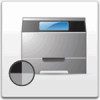Lexmark Monochrome Laser Administrator's Guide (1.4 MB) - Page 70
Ignore, Honor DSR, Honor, Technical Reference
 |
View all Lexmark Monochrome Laser manuals
Add to My Manuals
Save this manual to your list of manuals |
Page 70 highlights
Serial Menu (continued) Menu item Values Parity Even Odd None* Ignore This setting lets you select the parity for serial input and output data frames. Even The port expects to receive data frames with an even number of logical 1's per byte. The port transmits XOFF and XON with even parity. If the port detects a parity error, the port sends an inverted question mark to the printer instead of the character sent by the host system. Odd The port expects to receive data frames with an odd number of logical 1's per byte. The printer transmits XOFF and XON with odd parity. If the printer detects a parity error, the port sends X'5F' to the printer instead of the character sent by the host system. None The port expects no parity bit when it receives data. The port transmits XON and XOFF without parity bits. Ignore The port expects a parity bit when the port receives a data frame. The port ignores the parity bit. The port uses even parity when it transmits XON and XOFF. Refer to the Technical Reference for more information about parity. Honor DSR (only available if configured for RS232) Off* On Honor DSR determines if the printer uses the Data Set Ready (DSR) signal. DSR is one of the handshaking signals for most serial interface cables. If Honor DSR is set to Off, data received by the serial interface is seen as valid data. If Honor DSR is set to On, only data received while the DSR signal is in high condition is treated as valid data. The serial interface uses DSR to distinguish data sent by the computer from data created by electrical noise in the serial cable. This electrical noise can cause stray characters to print. Set Honor DSR to On to prevent stray characters from printing. * Factory default Using the Operator Panel and Menus 70















